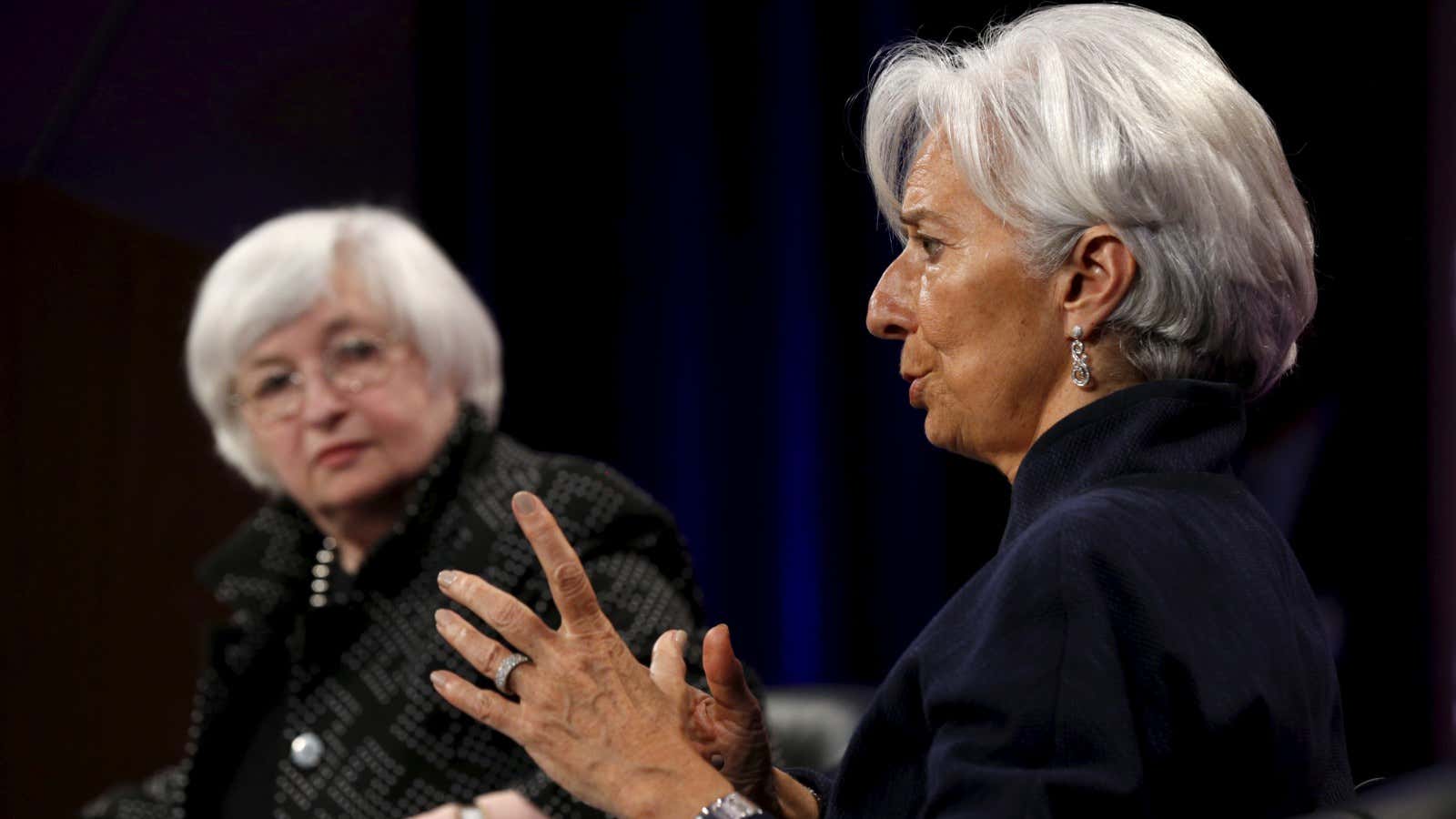“The results are clear,” writes Christine Lagarde, managing director of the International Monetary Fund, in a blog this week: “increasing female participation improves the bottom line.”
The new IMF study, released in time for today’s International Women’s Day, isn’t particularly groundbreaking. Others have already found that an increased number of women at the top of firms is correlated with an improvement in the bottom line. But the new study is large (pdf), drawing on data from 2 million firms across 34 European countries.
The study confirms that firms with a larger share of women in senior positions made more money. One additional woman in senior management or on a corporate board (where the size of the board remained unchanged) was associated with a 3-8% higher return on assets.
Lagarde and the study authors were keen to point out that policy matters when it comes to getting more women into those positions. Removing tax disincentives that might stop women returning to work, and making it easier to work full-time through increased childcare services, put more women in positions where reaching the top ranks is possible.
And most countries are still very far from parity. Legal requirements in some countries, such as Norway, have boosted the share of women in the boardroom to about 18%, the authors said. But only 12% of executive positions in Europe’s 620 largest listed companies were held by women in 2015.
Globally, over half of the 20,000 firms studied in a recent piece of research from the Peterson Institute for International Economics and EY had no female executives at all.
